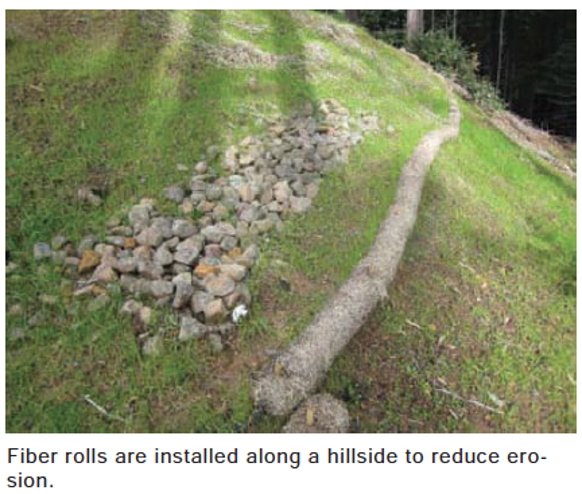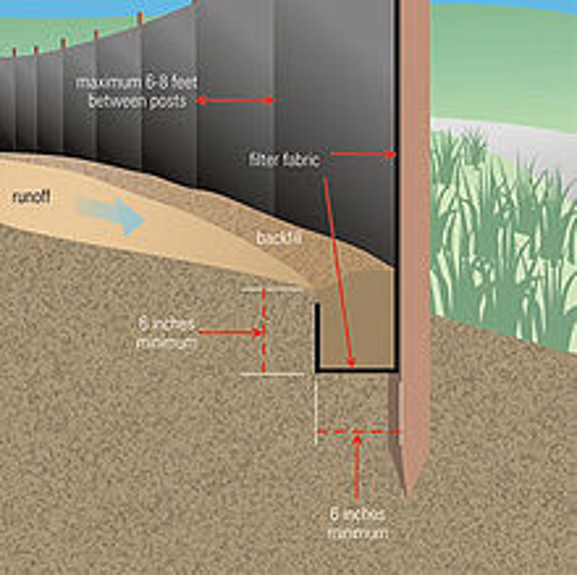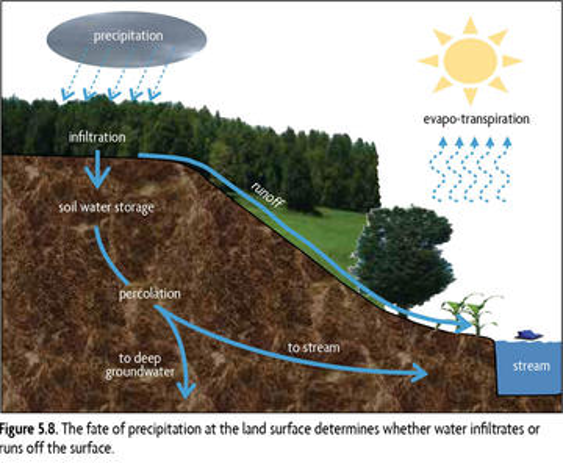What Are Straw Wattles?
Straw wattles are often referred to as straw worms, noodles, or straw bio-logs, although you may also hear them called straw tubes due to their cylindrical shape. These handy partners in the battle against soil erosion consist of either a weed-free substance (such as wheat or rice) or a composition of thinly shaved wood fibers. Although they are not extremely heavy, their dimensions can be significant, measuring approximately 25 feet in length and around 9 feet in diameter. Straw wattles are easy to work with because of their flexibility.
What Are Straw Wattles Used For?
Straw wattles are intended to help prevent soil erosion, chemical and water runoff, and increase healthy infiltration within the ground.
They are installed on slopes that have less than 30% of its original ground cover and are considered at risk for increased erosion. They can also be installed to help control on certain slopes and areas, such as:
- Around temporary stockpiles
- As perimeter control
- Top or bottom of slopes to intercept runoff
- Parallel to contours of the slope
- Perpendicular to flow lines and ditches
Wattles are a temporary, long-term solution that are usually positioned during building and construction projects to help avoid contributing any further harm to the surrounding environment by stopping any runoff. They can also be installed to rehabilitate and restore habitats in high-risk areas for erosion and flooding.
Straw Wattle Use #1: Soil Erosion Prevention
Since erosion control wattles are installed on slopes, they do an excellent job of catching any excess runoff from falling downhill. This is an essential step in preventing soil erosion that is caused by heavy winds and rainfall.
Wind erosion occurs when unprotected soil is carried away by strong winds to another location. Similarly, water erosion occurs when heavy rainfalls break apart and displace the same soil.
Unfortunately, this type of erosion primarily affects the top layer of soil, which is the most fertile part. Without fertile soil, environments and habitats can collapse and die. Nearly 24 billion tons of fertile soil is lost due to erosion each year, which is why prevention techniques like straw wattles are an essential part of slowing down this inevitable process.
Straw Wattle Use #2: Sediment Control
Sediment control is when measures are taken to keep eroded soil, chemicals, and excess runoff on a construction site so that it does not cause pollution in surrounding habitats, neighborhoods, and water sources.
Silt fences are often used for sediment control, but they are more expensive and not as strong as straw wattles. Since silt fences are only made out of a thin sheet of synthetic fabric, they are relatively simple to break through or bend in the event of flooding. Straw wattles, on the other hand, are low-lying, less expensive, and stronger alternatives for sediment control.
Straw Wattle Use #3: Increase Infiltration
Infiltration is a natural process that involves the downward entry of water into the soil. This is necessary to provide just enough water to the environment, but depending on the soil type, water may travel too quickly through. This varies on the type of soil and the inches per hour it is absorbing. If there is too much water for the ground, then the soil won’t absorb it correctly. Healthy infiltration is the best way for the land to store water for plant growth and soil organisms.
Unfortunately, without the right protection, bare soil is subject to direct impact and erosion. These misplaced particles move away or clog up open pore space, ultimately blocking infiltration.
Reduced infiltration is also a result of unethical farming practices, such as:
- Harvesting crop residues without any crop cover
- Tillage methods that disrupt the surface pores
- Equipment and livestock traffic
When water is no longer able to absorb into the soil, the soil is at field capacity. In turn, the moisture level might reach a wilting point where the plants become overwatered and begin to wilt. The good news is that straw wattles are excellent in agricultural areas, regions with heavy rainfall, and on slopes.
But wattles can absorb excess water so that not too much is pressing into the ground. Wattles are one of the simplest ways to avoid field capacity and allow healthy infiltration.
Straw Wattles for Erosion Control and Its Benefits
So how exactly do straw wattles work to help the land? These cylindrical bales of straw-like substance serve as an effective means of slowing down and spreading out sediment and water. They also collect the sediment that runs down with the dirt and water in areas where the ground has been displaced. When installed properly, straw wattles can:
- Increase the infiltration of water
- Control stormwater runoff
- Divert the flow of water to appropriate areas
- Add roughness to the ground
- Reduce erosion from an overly saturated area
- Keep already eroded soil on a slope
Straw wattles are effective tools in the construction and transportation business. They are easier to install and more economical than a silt fence (click here for a quick guide on how to install straw wattles). Plus, they have the right texture to collect the residue that runs off with rainwater or the dirt that tends to gather beneath slopes. Most straw wattle tubes are placed on sloping hills for precisely this reason. You can also shape the long, tube-like wattle in the direction that you want the water to flow to encourage proper run-off.
By using straw wattles, you can better maintain the land and significantly reduce erosion, which, in turn, helps the environment. Soil erosion causes part of the land to detach from its natural location, reforming the landscape and creating more sediment. This sediment can clog up drainage channels. Also, cropland is not as productive when much of the high-quality topsoil is washed away. Even more harmful are the effects of erosion on our waterways. When eroding soil is swept into the waterways, it results in pollution.
Straw wattles are an economical and efficient way to stop the erosion process. This contributes to:
- Healthier soil
- More productive crops
- Better environment
- Less pollution
Want to learn more about straw wattles for erosion control? Get in touch with our expert team today.



